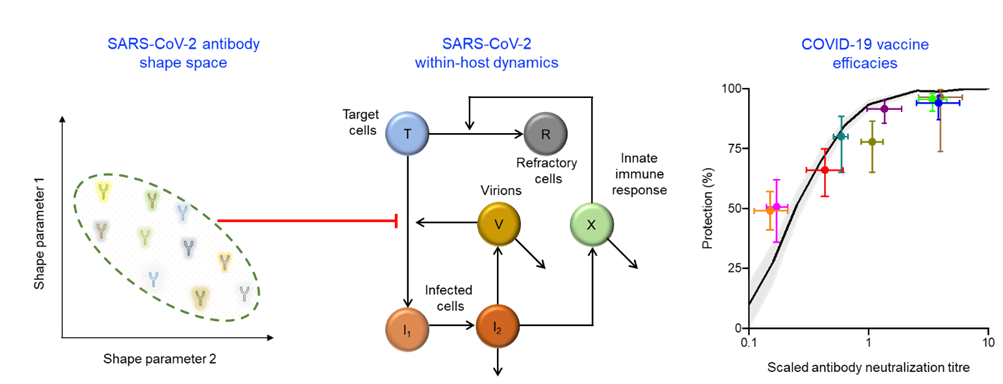 |
Understanding COVID19 vaccine efficacies

COVID-19 vaccines have been a game-changer in the current pandemic. Several vaccine candidates have conferred a high degree of protection, with some reducing symptomatic infections by over 95%. What determines this extent of protection remained poorly understood. In a recent study, Narendra Dixit, a professor in our department, together with alumni Pranesh Padmanabhan and Rajat Desikan, developed a mathematical model that predicts how antibodies generated by COVID-19 vaccines confer protection against symptomatic infections. This would help not only understand the workings of COVID-19 vaccines but also optimise their use and speed up the development of new ones. Predicting vaccine efficacies has been hard because the processes involved are complex and operate at many interconnected levels. Vaccines trigger different antibodies, each affecting virus growth differently. This in turn affects the dynamics of the infection and the severity of symptoms. Further, different individuals generate different collections of antibodies and in different amounts. To address these challenges, the authors analysed over 80 different neutralising antibodies generated after vaccination. They hypothesised that these antibodies constitute a 'landscape' and that each individual produces a unique 'profile' of antibodies that is a small, random subset of this landscape. They then developed a mathematical model to simulate infections in a virtual patient population of many thousand people with different antibody profiles. Model predictions closely matched efficacies reported in clinical trials for all the major approved vaccines. Further, the model showed that vaccine efficacy was linked to a readily measurable metric called antibody neutralization titre, opening up the possibility of using the model to test future vaccines for their efficacies before elaborate clinical trials are launched. Padmanabhan P, Desikan R & Dixit NM. Modeling how antibody responses may determine the efficacy of COVID-19 vaccines. Nature Computational Science 2, 123-131 (2022) Source: www.nature.com/articles/s43588-022-00198-0 |